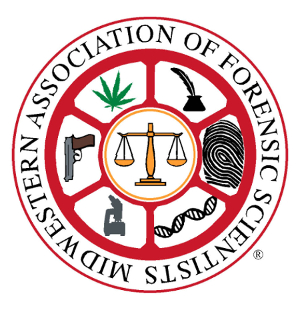Microtrace Scientists Present at Annual MAFS Meeting
This week (31 October to 05 November 2021), the Midwestern Association of Forensic Scientists (MAFS) is holding its annual meeting in Oak Brook, IL. On Thursday (November 04), Microtrace Research Scientist Kelly Brinsko Beckert will present on the “Forensic Analysis of Nonwoven Materials.” She will describe nonwoven manufacturing methods, fiber types, and fabric constructions, including their impact on forensic fiber identifications. Research Microscopist Jason Beckert will also present a paper entitled, “Animal Attack – The Application of Trace Evidence.” He will discuss the application of trace evidence to a fatal animal attack and how trace evidence fits into the larger process of crime scene reconstruction.
To register or learn more about the MAFS annual fall meeting, click here.
Abstract- “Forensic Analysis of Nonwoven Materials”
Presented by Kelly Brinsko Beckert
Nonwoven fabrics are pervasive throughout our modern environment, and have a wide variety of applications, including in hygiene products, automobiles, the medical field, construction and building materials, filtration devices, product packaging, and clothing, among others. However, despite their ubiquity and likelihood to show up as trace evidence, these fabrics and their analyses may be ignored in the forensic science laboratory. This presentation will describe nonwoven manufacturing methods, fiber types, and fabric constructions, including their impact on forensic fiber identifications. The forensic identification of such fibers and fabrics based on their optical properties will be discussed, as well as the use of suitable instrumental methods that may assist the examiner during analysis or fiber comparisons.
Abstract- “Animal Attack – The Application of Trace Evidence”
Presented by Jason C. Beckert
While relatively infrequent, modern-day humans are killed by a wide-variety of animals, both wild and domestic. When people are attacked and killed by animals it is critical to correctly identify the animal or animals responsible. In the absence of surviving witnesses, these investigations are potentially challenging and rely largely on physical evidence. Traditionally, animal attack investigations have been based on information provided by forensic pathologists, anthropologists, odontologists, and wildlife experts. Occasionally, other forensic disciplines including DNA, toxicology, and trace evidence are consulted to provide additional information.
This presentation will focus on the application of trace evidence to a fatal animal attack that also utilized DNA evidence to provide information to the investigating agency. It will discuss the challenges associated with an atypical sample matrix and the solution devised to process the evidence. The majority of the relevant trace evidence recovered consisted of animal hairs, but other potentially significant materials, including bone fragments, were also identified. Finally, a discussion of how the trace evidence fits into the larger process of crime scene reconstruction will be addressed.
MAFS
The Midwestern Association of Forensic Scientists was founded in 1971 as a non-profit organization where scientists from the Midwest could gather and discuss unique cases or research to help further the field and solve problems within the disciplines. Over the years, MAFS has grown to include participants from all over the U.S. and even some from outside the U.S.; however, the original goal of the organization has not changed.
Annual fall meetings and spring workshops are held to provide opportunities for scientists to advance their expertise and share their knowledge with others.
MAFS purpose is to encourage the exchange of ideas and information within forensic science as is exemplified through the mission statement “To further the field of forensic science by leading to inspire and inspiring to learn.”
How May We Help You?
Contact usto discuss your project in more detail.








